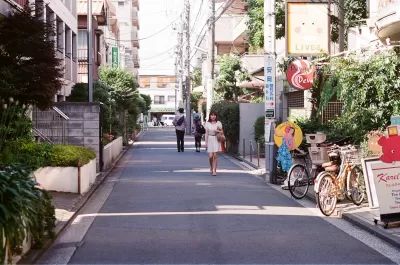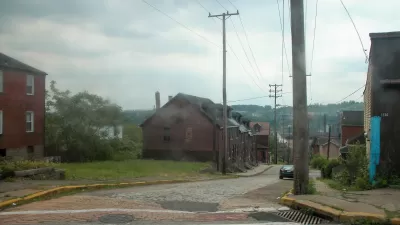Due to an aging populace, lackluster construction quality, and other factors, Japan is facing a glut of abandoned homes. For those with the ability to live there, these homes can be had for next to nothing.

"There are some 8 million abandoned homes–or akiya–in Japanese suburbia," Jesus Diaz writes. In some cases, the government is selling these properties for very low sums, or even giving them away and subsidizing their renovation.
Japan is well-known for its aging population, and the resulting depopulation of some areas has increased the akiya count. At the same time, Diaz writes, other factors add to the likelihood that certain Japanese homes will be vacated. One is shoddily constructed older housing stock. Some homes "are valueless because of aging prefab construction, quickly developed to meet the post-World War II population boom and subsequent housing crisis." Cultural factors also have a role to play, especially when certain properties "may be associated with lonely deaths, murder, and suicides committed in the homes."
These akiya deals are available to non-Japanese citizens as well, as long as one secures a permanent resident visa: not an easy feat in Japan, but one that be become more common as the country opens its doors to more immigrants with in-demand skills.
FULL STORY: Why Japan is giving away free houses (and how to get one)

Study: Maui’s Plan to Convert Vacation Rentals to Long-Term Housing Could Cause Nearly $1 Billion Economic Loss
The plan would reduce visitor accommodation by 25,% resulting in 1,900 jobs lost.

North Texas Transit Leaders Tout Benefits of TOD for Growing Region
At a summit focused on transit-oriented development, policymakers discussed how North Texas’ expanded light rail system can serve as a tool for economic growth.

Why Should We Subsidize Public Transportation?
Many public transit agencies face financial stress due to rising costs, declining fare revenue, and declining subsidies. Transit advocates must provide a strong business case for increasing public transit funding.

Dear Tesla Driver: “It’s not You, It’s Him.”
Amidst a booming bumper sticker industry, one writer offers solace to those asking, “Does this car make me look fascist?”

A Visual Celebration of Manhattan’s Chinatown Elder Community, Through Food
Lanterns, cafeteria trays, and community connection take center stage in this stunning photo essay.

How to Make US Trains Faster
Changes to boarding platforms and a switch to electric trains could improve U.S. passenger rail service without the added cost of high-speed rail.
Urban Design for Planners 1: Software Tools
This six-course series explores essential urban design concepts using open source software and equips planners with the tools they need to participate fully in the urban design process.
Planning for Universal Design
Learn the tools for implementing Universal Design in planning regulations.
City of Santa Clarita
Ascent Environmental
Institute for Housing and Urban Development Studies (IHS)
City of Grandview
Harvard GSD Executive Education
Toledo-Lucas County Plan Commissions
Salt Lake City
NYU Wagner Graduate School of Public Service




























